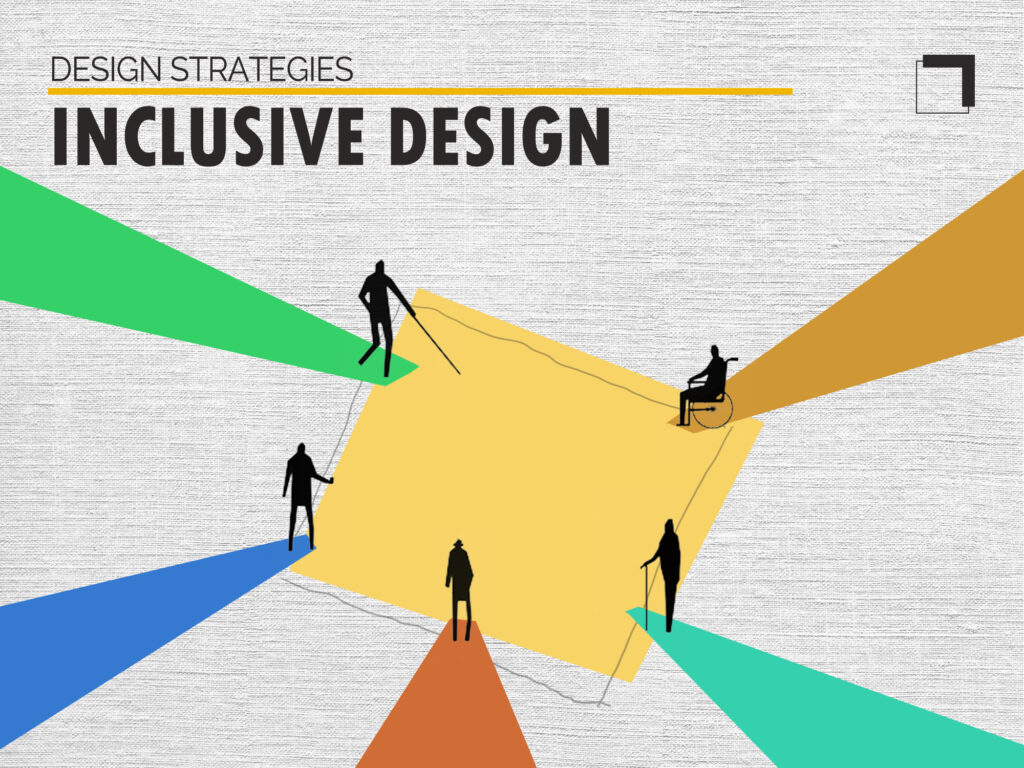Designing For Accessibility: Creating Inclusive Spaces
Designing for accessibility is a crucial aspect of creating inclusive spaces that accommodate people of all abilities. It involves taking into account the diverse needs and preferences of individuals with disabilities to ensure that they can access and use a space comfortably and safely.
In this day and age, it is important to recognize that designing for accessibility is not only a legal requirement but also a moral obligation. By creating inclusive spaces, we can ensure that people with disabilities are not excluded from participating in social, cultural, and economic activities, and that they are able to enjoy the same access and opportunities as everyone else.
Designing for Accessibility: Creating Inclusive Spaces
Accessibility is a crucial factor in designing spaces that are inclusive and welcoming to all. By designing with accessibility in mind, we can create spaces that are not only functional but also aesthetically pleasing and comfortable for everyone. In this article, we will discuss the importance of designing for accessibility and provide tips for creating inclusive spaces.
The Importance of Designing for Accessibility
Accessibility is about making sure that everyone, regardless of their abilities, can access and use a space. It is not just about providing ramps or wider doors for wheelchair users, but also about considering the needs of people with visual, hearing, or cognitive impairments. By designing for accessibility, we can create spaces that are welcoming and inclusive for everyone.
Designing for accessibility also has practical benefits. For example, a space that is easy to navigate for people with mobility issues will also be easier for parents with strollers or people carrying heavy bags. Designing for accessibility can also increase the value of a property, as it will appeal to a wider range of people.
Barriers to Accessibility
There are many barriers to accessibility that can make it difficult for people with disabilities to access and use a space. Some common barriers include:
– Physical barriers, such as steps, narrow doorways, or uneven surfaces.
– Lack of visual cues, such as signs or contrasting colors, that can help people with visual impairments navigate a space.
– Poor lighting, which can make it difficult for people with visual impairments to see or for people with hearing impairments to lip-read.
– Inaccessible technology, such as websites that are not compatible with screen readers or audio systems that do not have a hearing loop.
Designing for Accessibility
Designing for accessibility is about thinking about the needs of all users and making sure that everyone can access and use a space. Here are some tips for designing for accessibility:
1. Consider the needs of all users
When designing a space, consider the needs of all users, including people with disabilities. Think about how people with different abilities will use and navigate the space, and try to design for a range of needs.
2. Provide clear signage and wayfinding
Clear signage and wayfinding can help people with visual impairments navigate a space. Use contrasting colors and clear fonts to make signs easy to read, and provide tactile or braille signs for people with visual impairments.
3. Ensure good lighting
Good lighting is important for everyone, but it is particularly important for people with visual impairments. Make sure that the space is well-lit, with even lighting and no glare.
4. Provide accessible technology
Make sure that any technology used in the space is accessible to people with disabilities. This might include providing screen readers for websites or hearing loops for audio systems.
5. Provide accessible seating and furniture
Make sure that seating and furniture is accessible to people with disabilities. This might include providing adjustable-height desks or chairs with armrests.
6. Design for easy navigation
Design the space for easy navigation, with clear paths and wide doorways. Provide ramps or lifts for people with mobility issues, and consider the placement of furniture to ensure that there is enough space to navigate.
The Benefits of Designing for Accessibility
Designing for accessibility has many benefits, including:
– Creating a welcoming and inclusive space for everyone.
– Making the space easier to navigate for people with disabilities and other users.
– Increasing the value of a property by appealing to a wider range of people.
– Meeting legal requirements for accessibility.
– Demonstrating a commitment to social responsibility and inclusivity.
Designing for Accessibility vs Designing for Aesthetics
Designing for accessibility and designing for aesthetics are not mutually exclusive. In fact, designing for accessibility can enhance the aesthetics of a space, as it can lead to more thoughtful and creative design solutions. By designing for accessibility, we can create spaces that are not only functional but also beautiful and inclusive.
In conclusion, designing for accessibility is about creating inclusive spaces that are welcoming and easy to use for everyone. By considering the needs of all users and designing for accessibility, we can create spaces that are not only functional but also aesthetically pleasing and socially responsible.
Frequently Asked Questions
What is designing for accessibility?
Designing for accessibility means creating spaces, products, and services that can be used by people with disabilities. This involves considering the needs of people with diverse abilities and ensuring that they can access and use the space or product with ease. It involves removing barriers and creating inclusive environments that meet the needs of everyone.
Designing for accessibility is essential to ensure that everyone has equal access to spaces, products, and services. It is also a legal requirement in many countries. By designing for accessibility, you can create spaces that are welcoming and inclusive for all.
What are some key considerations when designing for accessibility?
When designing for accessibility, there are several key considerations to keep in mind. These include:
1. Physical accessibility: ensuring that spaces are accessible to people with mobility impairments, including wheelchair users.
2. Sensory accessibility: ensuring that spaces are accessible to people with visual or hearing impairments.
3. Cognitive accessibility: ensuring that spaces are accessible to people with cognitive impairments or learning disabilities.
4. Inclusive design: designing spaces that are accessible to people with diverse abilities.
5. Usability: ensuring that spaces are easy to use and navigate for everyone.
How can I make my website accessible?
Making your website accessible involves following a set of guidelines known as the Web Content Accessibility Guidelines (WCAG). These guidelines outline best practices for making websites accessible to people with disabilities. Some key considerations include:
1. Providing alternative text for images to ensure that they are accessible to people with visual impairments.
2. Ensuring that all content can be navigated using a keyboard, as some people with mobility impairments cannot use a mouse.
3. Ensuring that all videos have captions and that audio files have transcripts.
4. Using clear and simple language to ensure that people with cognitive impairments can understand the content.
What are some common accessibility barriers in public spaces?
There are several common accessibility barriers in public spaces, including:
1. Lack of wheelchair accessibility: many public spaces do not have ramps or elevators, making them inaccessible to people with mobility impairments.
2. Poor lighting: inadequate lighting can make it difficult for people with visual impairments to navigate public spaces.
3. Lack of signage: unclear or confusing signage can make it difficult for people with cognitive impairments to navigate public spaces.
4. Inaccessible technology: many public spaces use technology that is not accessible to people with disabilities, such as touchscreens that cannot be used with a keyboard.
Why is designing for accessibility important?
Designing for accessibility is important for several reasons. First, it ensures that everyone has equal access to spaces, products, and services. Second, it is a legal requirement in many countries. Third, designing for accessibility can lead to more innovative and creative design solutions. Finally, designing for accessibility can help to create more welcoming and inclusive environments for everyone.
In conclusion, designing for accessibility is not just a matter of compliance with legal standards or a matter of goodwill towards individuals with disabilities. It is about creating inclusive spaces that allow everyone to participate fully in society. By prioritizing accessibility in design, we can break down the barriers that prevent people from accessing the built environment and promote equity and social justice.
As designers, we have a responsibility to ensure that our designs are accessible to all. This involves considering the diverse needs of people with disabilities and incorporating universal design principles into our work. By doing so, we can create spaces that are not only functional but also aesthetically pleasing and welcoming to all.
In the end, designing for accessibility is not just a technical issue but a human one. By making accessibility a priority in our designs, we can create a more inclusive and equitable society where everyone has the opportunity to participate and thrive. Let us embrace the challenge of designing for accessibility and create spaces that reflect the diversity and richness of the human experience.




Leave a Reply